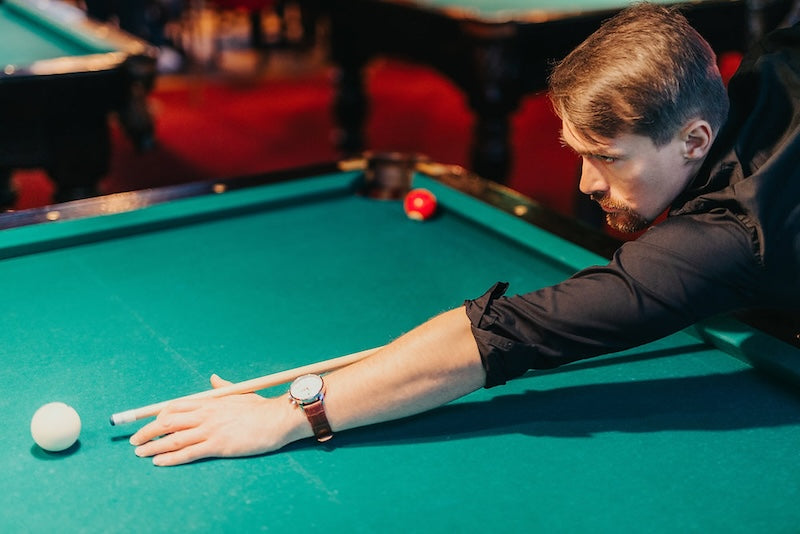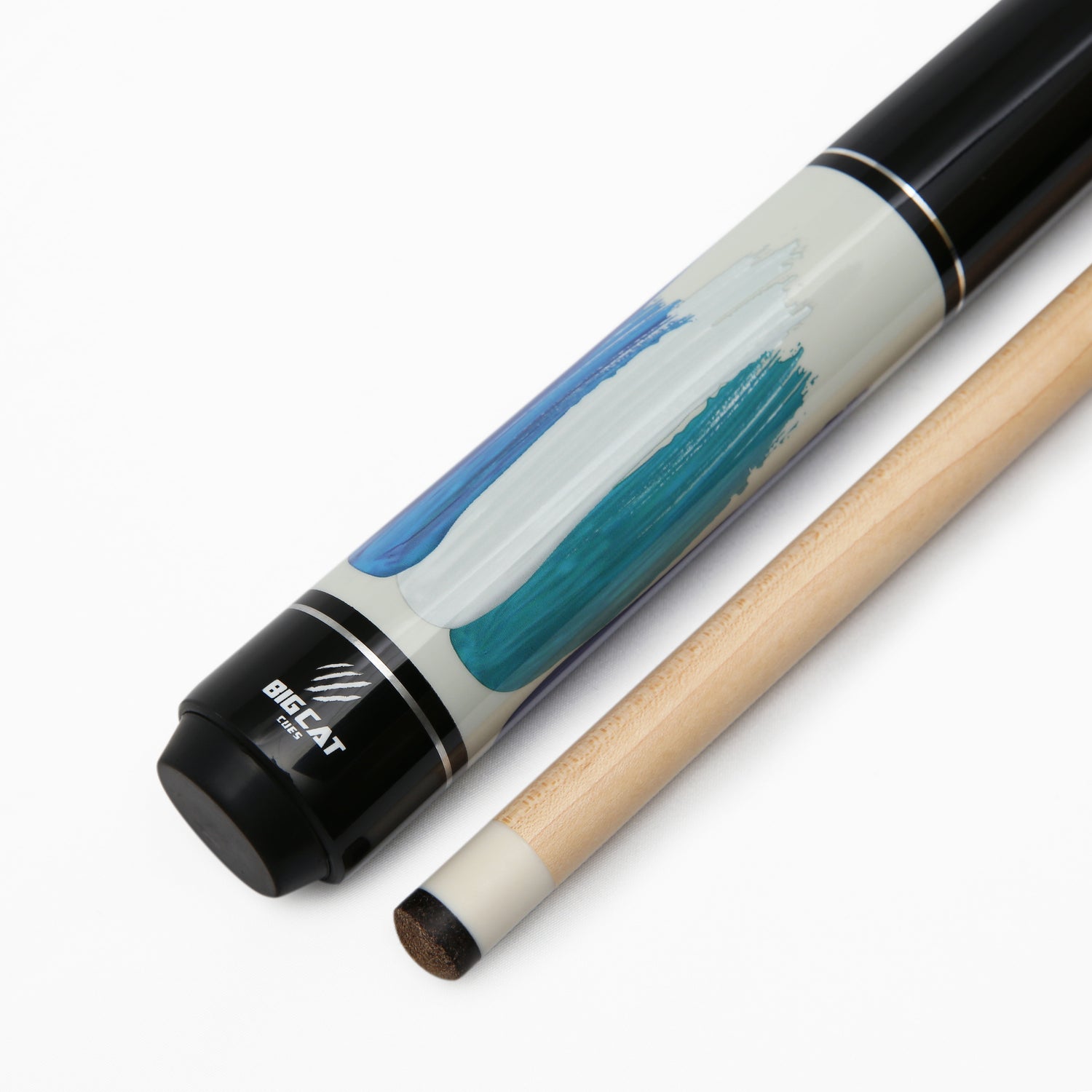
How to Make a Pool Cue? 3 Steps to Craft Your Custom Stick
Every game of Pool begins with an essential tool in your hands – the pool cue. Though professional pool sticks can be expensive, there are ways to create the cue stick on your own. This guide will show you how to make a pool cue, from selecting the finest materials to mastering the intricate details. Whether you are a beginner or an expert, we will help you explore the art and science of cue-making through 3 following steps.
3 Main Steps To Craft Your Stick
1. Choosing Pool Cue Material And Dimensions
Before making your stick, you must understand how to choose a pool cue. There are two important criteria to consider for your cue as follows:
1.1. Pool Cue Materials
Choosing pool cue material is the first important step if you want to learn how to build a pool cue. You can use several materials to make pool cues, including wood, fiberglass, graphite are most commonly used, along with carbon fiber, aluminum, plastic, and hybrid models.
However, most professional players prefer using wood for their pool cues, although fiberglass and graphite also offer some extraordinary benefits. Wood cues are robust and long-lasting, which you can quickly fix or straighten if scratched or warped. Additionally, they are more natural and provide the cue ball a better feel.
Many exotic woods are suitable for pool cue fabrication. Whether the cue hits hard or softly depends on the type of wood used in its construction. In contrast to cue sticks manufactured by Ebony and Cocobolo, which deliver a forceful blow, those produced from Rosewood, for instance, create a softer hit.

1.2. Pool Cue Dimensions
Pool cue dimensions can also significantly affect your shot. Making a pool cue with suitable weight, length, and tip size will help you hold the pool stick correctly and make a precise shot to improve your competition.
- Weight: Cue sticks typically weigh between 18 and 22 ounces. A lighter cue stick will create more snap, making the object ball slower. In a heavier pool cue, the cue ball will be slower, and the object ball will likely pocket faster.
- Length: A typical adult pool cue is 57 to 58 inches long. Younger or shorter players should utilize pool cues between 36 and 52 inches long. For people, 4 feet or shorter, 36-42 inches is a great fit.
- Tip size: The average range of pool tip diameter for accurate shots is between 0.50′′ and 0.52′′
2. Making The Pool Cue Shaft
*We use Canadian maple wood in this pool cue-making process.*
How to make a pool cue shaft? First, rough out several hard maple wood blanks to a 1-inch diameter, then leave them to dry. When the blanks are sufficiently dry, you can proceed as follows:
Step 1: Mount a dried cue blank on the wood machine using a spur-attached sturdy chuck. While finishing, increase the machine's speed to 2000 rpm to true this shaft. You can learn how to make a pool cue lathe by understanding its structure.
Step 2: Use a skew tool to make a peeling cut while turning the shaft. To prevent excessive vibrations, as much as possible, reduce the contact surface between the device and the wood. Avoid giving a deep cut because it could cause oscillations.
Step 3: Now, square the cue shaft's two ends. Reverse the blank and install it in the chuck after removing the spur attachment, then position the tailstock.
Step 4: Take out the live center and insert a 360-bit drill into the drill chuck in the tailstock. Make sure to drill the hole precisely in the center. Make a 114" deep hole in the shaft.
Step 5: Remove the drill bit and put a tap size 7/16-14 in the drill chuck. To receive the brass insert, tap the previously drilled hole. Insert a 5/16-18 x 12 bolt through the threaded hole.
Step 6: Thread the insert into place using the bolt and some adhesive on the internal thread. Take your time pulling the bolt out.
Step 7: This step involves inserting a 5/16-18 x 12 pin. Placing the pin in the chuck will now cause the shaft to reverse.
Step 8: Turning the first 9′′ of the shaft to the same diameter at the tailstock. Then, move toward the headstock, where the final shaft diameter will be 78". To reduce vibrations, don't forget to utilize the steady rest.
Step 9: Place a silver ring in the middle of two 7/8-5/8 OD-ID plastic rings at the headstock.
Step 10: Only complete the first 4′′ of the shaft; finish the remaining shaft with a piece of leather polish.
Step 11: Next, attach a ferrule to the shaft tip. If the ferrule's diameter exceeds the shaft tip, spin it on the lathe until it is the same size.
Step 12: Apply specialized glue to the tip and fix it to the ferrule. True the ferrule and tip, and lower the lathe's speed to 500–600 rpm. You should be able to run your finger over the shaft and feel that it is a seamless, single piece without any sharp edges. The shaft should ultimately be 29 inches long. Later you can replace the cue tip when it becomes thinner and worn down.
3. Making The Pool Cue Handle
The handle should be 29 inches long, and the total weight of the shaft and handle should be 18 to 22 ounces.
Step 1: Rough out a 2′′ stock of lacewood to approximately 114" in diameter. Ensure that the tailstock shoulder is square.
Step 2: Reverse the handle and mount it in a 3-jaw chuck or a similar device.
Step 3: Using a drill chuck attached to the tailstock, drill a hole into the handle that is just a hair smaller than the 5/16 pin. The hole should be around two inches deep.
Step 4: Put some Hot Stuff Glue in the hole and force the 5/16 pin into place with the drill chuck. This technique guarantees exact alignment, something you most likely won't be able to do while tapping.
Step 5: After the adhesive has cured, turn the handle around and insert the pin into the driving chuck.
Step 6: To make the handle exactly cylindrical, cut along the handle's whole length. Avoid vibrating the cut by not making it too deep.
Step 7: The following step requires the addition of a stainless steel joint collar. Drill the collar with 5/8 ID threads first. Add a black butt material between the collar and the wood. Place the collar in the chuck, apply some glue, and then position the collar and ring once the handle's end has been turned to a 5/8 OD.
Step 8: Rotate and finish the pool cue's handle to the desired taper. You should be able to run your finger over it and feel that it is one solid piece without any joints or edges. You can make the handle attractive by applying multiple coats of gun stock finish. At the very end, include a rubber stop.

After finishing the pool cue, you should protect and store it in good condition. Knowing how to make a pool cue holder to keep all the pool cues is better.
Top 4 High-Quality Pool Cues
Similar to a pool table with a wide range of prices, materials, and sizes, making a pool cue is difficult and takes a long time to prepare. Add to that is the advanced requirement for accuracy and attention to detail.
If making a pool cue from scratch causes you a headache, several distinctive, high-quality pool cues are available on the market with fashionable designs. Here is the list of the top 4 high-quality pool cues from Big Cat:
|
Pool Cue Name |
Features |
Prices |
|
Big Cat I Red Silver |
|
$69.99 |
|
Big Cat V Black Black |
|
$69.99 |
|
Big Cat Paint I Invigorate |
|
$69.99 |
|
Big Cat Paint 5 Gauntlet Red |
|
$69.99 |

In general, crafting your custom pool cue is not just about creating a tool but a journey of craftsmanship and personalization. With our given steps, you can quickly learn how to make a pool cue. Or transform a simple cue into a unique yours by carefully selecting materials, precise shaping, and artistic touches.
Making a pool cue based on personal playing habits and style will be a fantastic experience for any pool player. A customized cue can also be one of the competitive advantages that you can have in a pool competition.
See more: Best pool cue for the money
Frequently Asked Questions
How Long Does It Take To Make A Custom Pool Cue?
It can take anywhere from a few days to several weeks. However, the time required depends on your skill level, the complexity of the design, and the drying times for adhesives and finishes.
What Materials Are Commonly Used To Make Pool Cues?
Pool cue shafts are typically made from hardwoods like maple, while the tips are often leather. You can also make the cue butt from various materials, such as wood, carbon fiber, or composite materials.
How Do I Maintain And Care For My Custom Cue?
To keep your cue in top condition, store it in a cue case when not in use to protect it from damage. Clean the shaft and tip regularly, and apply cue wax or conditioner as needed to maintain its finish.
What Are The Benefits Of Making My Own Custom Pool Cue?
Making your pool cue can bring many benefits:
- Allow you to have a stick tailored to your playing style and aesthetics.
- Form a creative and rewarding hobby that enhances your mind.
- Create a unique and functional piece of equipment that can help you improve your game result.


